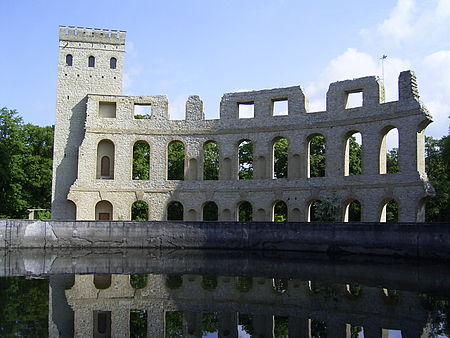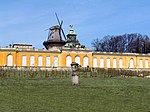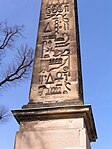Ruinenberg
Buildings and structures in PotsdamGeography of PotsdamSanssouci Park

The Ruinenberg is a hill in the Bornstedt borough of Potsdam, located north of Sanssouci Park. In 1748, the Prussian king Frederick the Great had a water tank with a capacity of around 7,600 cubic metres (270,000 cu ft) built on top to supply the Sanssouci water features, and had it decorated with artificial ruins. From 1841 a surrounding landscape garden was laid out at the behest of King Frederick William IV of Prussia, according to plans designed by Peter Joseph Lenné.
Excerpt from the Wikipedia article Ruinenberg (License: CC BY-SA 3.0, Authors, Images).Ruinenberg
Pappelallee, Potsdam Jägervorstadt
Geographical coordinates (GPS) Address Nearby Places Show on map
Geographical coordinates (GPS)
| Latitude | Longitude |
|---|---|
| N 52.409861111111 ° | E 13.037944444444 ° |
Address
Gartenpyramide
Pappelallee
14469 Potsdam, Jägervorstadt
Brandenburg, Germany
Open on Google Maps










